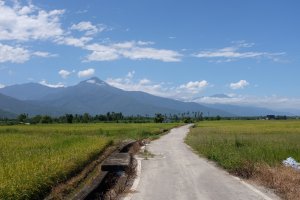The Belt and Road Initiative, initially known as One Belt One Road, is China’s latest national development strategy, which aims to:
Promote the connectivity of Asian, European and African continents and their adjacent seas, establish and strengthen partnerships among the countries along the Belt and Road, set up all-dimensional, multi-tiered and composite connectivity networks, and realize diversified, independent, balanced and sustainable development in these countries.[1]
The initiative is composed of six sections: the Eurasian Land Bridge, the China-Mongolia-Russia Economic Corridor, the China-Central Asia-West Asia Economic Corridor, the China-Indochina Peninsula Economic Corridor, the China-Pakistan Economic Corridor, and the Bangladesh-China-India-Myanmar Economic Corridor.
The “Cooperation Priorities” put forth in the 2015 “Visions and Actions” plan are: policy coordination, facilities connectivity, unimpeded trade, financial integration, and people-to-people bond.[2] The relationship between One Belt One Road and China’s energy policy first becomes apparent through these priorities. Under “facilities connectivity”, the plan states that “[w]e should promote cooperation in the connectivity of energy infrastructure, work in concert to ensure the security of oil and gas pipelines and other transport routes…”[3] In the next section titled “unimpeded trade”, the plan also encourages:
“[C]ooperation in the exploration and development of coal, oil, gas, metal minerals and other conventional energy sources…cooperation in the processing and conversion of energy and resources at or near places where they are exploited, so as to create an integrated industrial chain of energy and resource cooperation.”[4]
While the Belt and Road Initiative is not primarily about energy, we can see from official documents that energy is indeed a priority.
China views its energy security through the lens of ensuring security of supply rather than taking a more holistic approach that emphasizes concerns such as the environment and sustainability. Apart from simply ensuring supply, China is most concerned about the reliability with which it can transport imported oil back to China, followed by the affordability and diversity of energy supplies. Some scholars ascribe this concern to Chinese fear of over-reliance on the Strait of Malacca, which serves as a transit point for much of China’s imported oil.
The sections of the Belt and Road that have the greatest relevance to energy are the China-Pakistan Economic Corridor, the China-Central Asia-West Economic Corridor, the Bangladesh-China-India-Myanmar Economic Corridor, and the China-Mongolia-Russia Economic Corridor. While there are certainly projects across all six corridors that are in some way related to energy, this paper will ignore projects intended to provide energy to the partner country (i.e. hydropower and transmission line projects) and focus on those projects relevant to China.
China-Pakistan Economic Corridor
The China-Pakistan Economic Corridor (CPEC) is one of the six economic corridors that One Belt One Road promises to develop, and the crown jewel of CPEC is the city of Gwadar, in the Pakistani province of Balochistan. As a port city on the Indian Ocean, Gwadar is intended to be “a hub of connectivity for the [China-Pakistan Economic] Corridor, and an indispensable interchange for the Silk Route [sic].”[5] Back in 2015, President Xi pledged that China would invest $46 billion into Pakistan’s infrastructure, most of which would be allocated towards CPEC and the construction of roads, rails, and pipelines connecting Gwadar to Kashgar in Xinjiang.[6] The port became operational in November 2016,[7] and as of December 2016, China has pledged to contribute a total of $9.7 billion USD (1 trillion Pakistani Rupee) for the construction of more than 1250 kilometers of roadway through Balochistan.[8]
Other energy-related projects in Gwadar include the planned construction of both an oil pipeline and a gas pipeline, as well as the construction of an LNG terminal. The 700-kilometer gas pipeline and refinery would be geared more towards Pakistan’s domestic use, connecting Gwadar to the Pakistani city of Nawabshah, but could potentially be extended in the future.[9] The Pakistani state construction company Frontier Works Organization will oversee the planning and construction of an oil pipeline linking Gwadar to western China. Furthermore, it is reported that Huanqiu Contracting and Engineering Corporation has expressed an interest in building an oil refinery in Gwadar.[10]
China-Central Asia-West Asia Economic Corridor
The China-Central Asia-West Asia Economic Corridor is notable for its pipelines. The China-Central Asia Gas Pipeline is actually four pipelines, three of which were completed even before One Belt One Road was announced.[11] When Lines A/B/C begin operating at capacity, they will allow China to import 55 billion cubic meters (bcm) a year from Central Asia (primarily Turkmenistan), and if Line D is completed it will boost the total throughput of the pipeline system to 85 bcm.[12]
Bangladesh-China-India-Myanmar Economic Corridor
The Bangladesh-China-India-Myanmar Economic Corridor (BCIM) has received much less media attention than the others. Like the China-Central Asia Gas Pipeline, the BCIM predates One Belt One Road, but discussions have stalled since December 2014.[13] While little progress has been made overall, China has made some progress in Myanmar. Its biggest priorities there have been the completion of twin gas and oil pipelines running from Myanmar to Kunming and the development of Kyaukpyu Port in Myanmar. The China-Myanmar oil and gas pipelines were completed in 2014 and run from the port of Kyaukpyu to the city of Kunming.[14] The gas pipeline accounted for roughly 5% of China’s natural gas imports in 2016,[15] and when the oil pipeline reaches full capacity it will be able to supply roughly 6% of China’s crude oil imports.[16] A consortium of Chinese companies also won a bid to build another deep-sea port in Kyaukpyu, which would facilitate future oil shipments.[17]
China-Mongolia-Russia Economic Corridor
An economic corridor that has also received a comparatively low amount of attention is the China-Mongolia-Russia Economic Corridor. China, Mongolia, and Russia did not sign a trilateral economic agreement formalizing the corridor until June of 2016.[18] The agreement covers 32 projects, thirteen of which are related “transportation infrastructure” such as railways and highways, and only one of which has to do with energy.[19] While not included in the trilateral agreement, an important energy project in this region is what is referred to in the “Building the Belt and Road” document as the “China-Russia Oil Pipeline.” Russia began sending China oil through the Eastern Siberia-Pacific Ocean (ESPO) pipeline in 2011.[20] The offshoot carrying oil from the ESPO pipeline to China has an annual capacity of 15 million tons, and a second spur (expected to be completed in 2018) would double that to a total of 30 million tons per year.[21] China has also made long-term plans to import Russian natural gas through pipelines. Construction on the first pipeline began as part of a $400 billion deal for 38 bcm of Russian natural gas each year, and this pipeline is expected to come online at the end of 2018.[22] Plans are being floated for a second pipeline that would carry 30bcm per year from West Siberia over 30 years.[23]
The common feature of the energy-related projects under the Belt and Road Initiative is that they primarily contribute to the reliability with which China can transport energy resources from abroad back to China.
Some projects are purely about transport. By providing an alternate route for maritime shipping that would otherwise transit through the Strait of Malacca, Gwadar has the potential to greatly improve China’s perception of its transport reliability. The proposed Dubai-Gwadar-Urumqi oil route would be 3,600 kilometers, as compared to the current 10,000-kilometer Dubai-Shanghai-Urumqi route.[24] One study estimates that the construction of an oil pipeline connecting Gwadar with western China would increase the proportion of pipeline imports from 12.25% to 20.07%, and reduce China’s reliance on the Strait of Malacca by 11%.[25] This pipeline, however, would not improve affordability. The cost to transport a barrel of oil 1000 kilometers to China by ship is cheaper than the equivalent journey through a pipeline ($0.163 by tanker and $0.793 by pipeline),[26] so the per-barrel cost of the combined maritime-pipeline route through Gwadar would be greater than a purely maritime route, but it would reduce the transit time by a factor of 5.[27]
Like the planned pipeline from Gwadar, China-Myanmar oil and gas pipelines allow China to reduce the total transit time of Middle East oil, though not as dramatically and again at the expense of a greater cost per barrel.[28] That said, the advantage of the China-Myanmar pipeline is that it is already complete and has begun operating. Neither Pakistan nor Myanmar produce their own oil or gas, but both provide China with a means of bypassing the Strait of Malacca so that oil and gas from China’s existing suppliers in the Middle East and Africa can be delivered directly to inland locations in western China.
Central Asia and Russia not only provide China with energy resources, but also do so in a way that enhances transport reliability. Russia is perhaps China’s most important energy partner; in 2016 it overtook Saudi Arabia to become China’s primary crude oil supplier, shipping roughly 1.05 million bpd to China.[29] Importing more Russian oil improves China’s perception of transport reliability at the expense of diversity.[30] China will become more dependent on Russian oil, but if this oil arrives via pipeline, China will be able to avoid the Strait of Malacca.
The improved sense of transport reliability, overall supply, and affordability provided by the China-Central Asia Gas Pipeline also comes at the cost of diversity. The completion of Line D would result in a capacity of natural gas that exceeds China’s current needs: in 2015 China imported roughly 59.8 bcm of natural gas through pipelines and as liquefied natural gas (LNG). As it stands, more than half of China’s natural gas imports come in the form of pipeline gas from Central Asia (33.6 bcm vs. 26.2 bcm of LNG),[31] and upwards of 80% of its pipeline gas comes from Turkmenistan.[32]
Oil and gas pipelines differ in how they impact affordability. Maritime shipping is the most cost-effective way to deliver oil from one location to another and the best way to move the vast volumes of oil that China requires. For example, the completed spur of the ESPO pipeline can deliver 15 million tons of oil to China each year, or 41,000 tons a day. A Suezmax tanker, like the ones that deliver oil to the Myanmar-China pipeline, can carry more than three times that amount of oil in a single trip (140,000 tons).[33]
Oil and natural gas differ in difficulty of transport, which influences affordability depending on the chosen mode of transportation. Cooling natural gas to its shippable liquid form is an extremely energy-intensive process, and LNG must be re-gasified at a purpose-built LNG terminal before it can be distributed via local pipelines. Another factor that would make LNG shipping more expensive than oil shipping is the difficulty and cost associated with manufacturing LNG tankers; an LNG carrier with a capacity of 138,000 cubic meters would cost roughly $150-160 million, twice the cost of a Very Large Crude Carrier (VLCC) capable of carrying “four to five times as much energy.”[34] The low cost associated with shipping oil is likely supported by economies of scale as well: in 2016 oil tankers made up roughly 27.9% of the global maritime shipping fleet, while gas carriers of all kinds (to include LNG, liquid petroleum gas, and others) made up a mere 3% of the global fleet.[35] Therefore, in the absence of definite figures comparing the cost of transporting maritime LNG and pipeline natural gas to China, it is reasonable to assume that gas pipelines contribute to both transport reliability and affordability.
In transitioning from the “going-out” strategy to One Belt One Road, China has shifted from prioritizing equity oil to prioritizing transport reliability. Gabriel Collins and Andrew Erickson first identified the possibility of such a shift back in 2007, arguing that protecting “midstream” assets such as tankers only requires that China develop “robust naval and aviation capabilities,” whereas attempting to protect “upstream” assets such as oilfields would require the deployment of ground forces to locations overseas.[36] Nonetheless, this shift has still occurred within the bounds of the “traditional” energy security concept in that China is still trying to ensure security of supply, but instead of securing the source of that supply, it is ensuring that resources are able to make it all the way to China.
Some scholars have argued that China’s fear of the “Malacca dilemma” is overblown and that China does not need to worry about a foreign power cutting off its access to the Strait of Malacca. However, if China believes that the Malacca dilemma is real then for all intents and purposes it is, because China will act to address any perceived vulnerability in its energy security. In the context of One Belt One Road, this is evidenced by China’s willingness to invest in building up a domestic tanker fleet and pipeline construction, even though this is less cost-effective than relying on the system of chartered oil tankers and maritime oil currently in use. Looking beyond One Belt One Road, what else might China do to address its perceived vulnerability in the Strait of Malacca? An optimistic take on this is that China might be amenable to taking on a greater role in keeping the sea lanes of communication open. A more negative outcome is that, as China’s navy and air force modernize, China may turn to force if it feels that its access to the Strait of Malacca is being threatened.
[1] National Development and Reform Commission, Ministry of Foreign Affairs, and Ministry of Commerce, “Vision and Actions on Jointly Building Silk Road Economic Belt and 21st-Century Maritime Silk Road.”
China Radio International, http://www.cpecinfo.com/gwadar-port-city.
[19] Dulguun Bayarsaikhan, “Over 30 Projects Lined up for Trilateral Economic Corridor,” The UB Post, http://theubpost.mn/2016/06/29/over-30-projects-lined-up-for-trilateral-economic-corridor/.
[23] Guo, “Cnpc to Start Laying Second China-Russia Oil Pipeline in June”.





